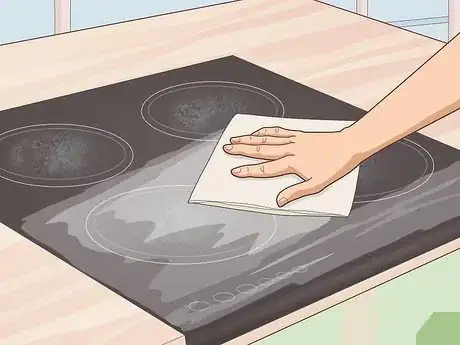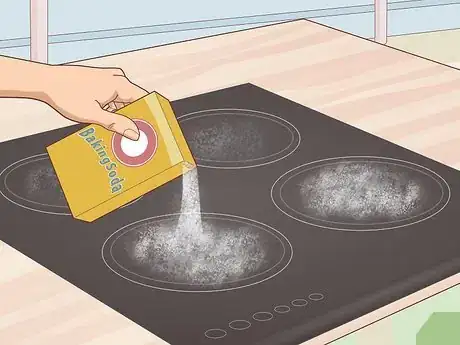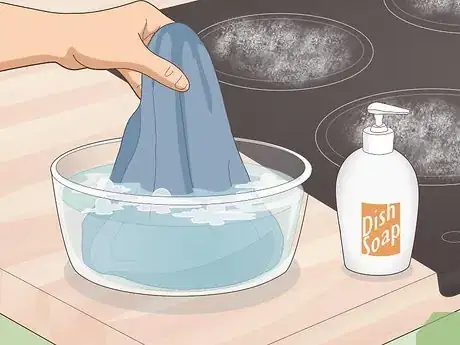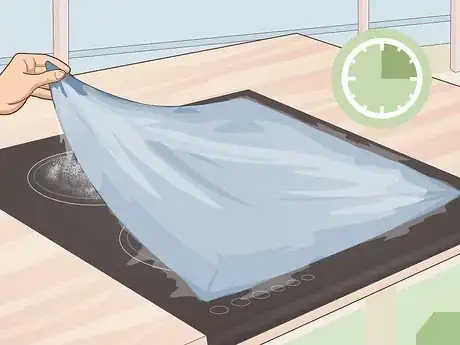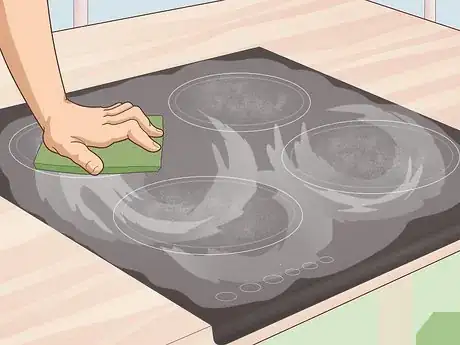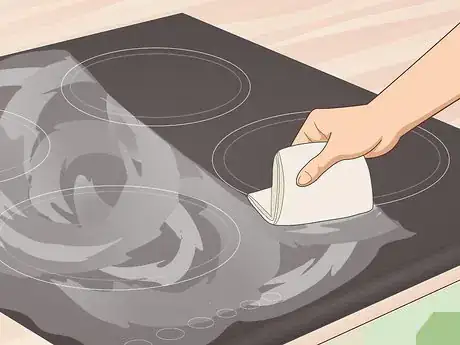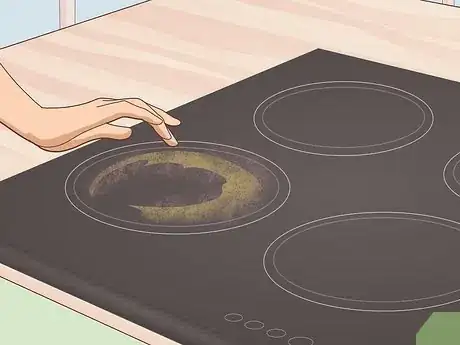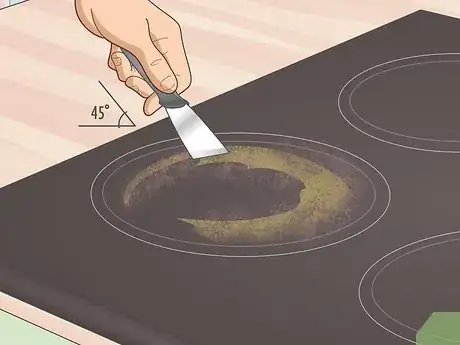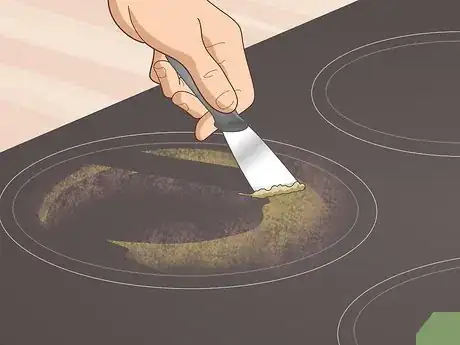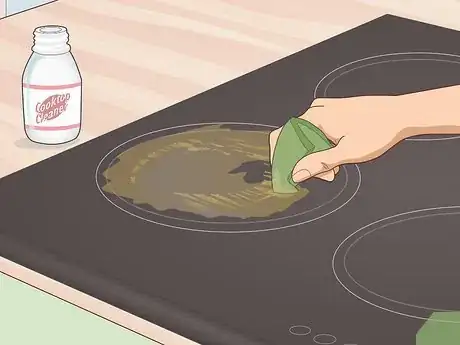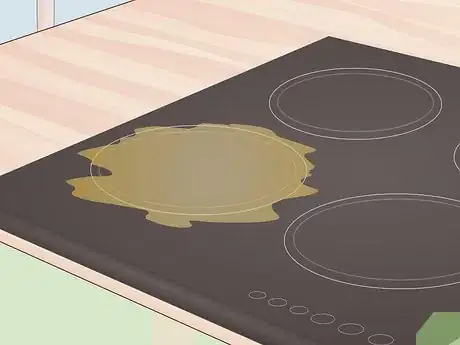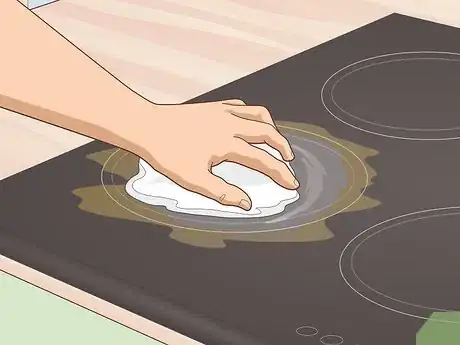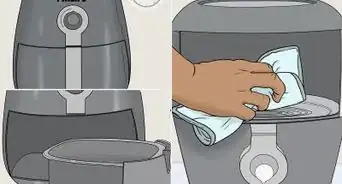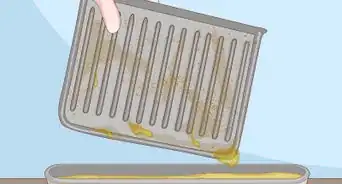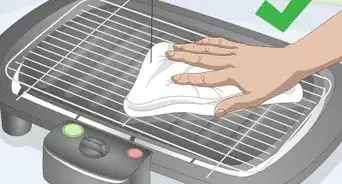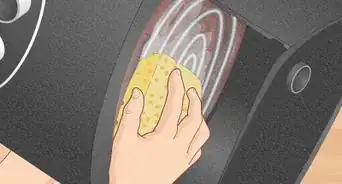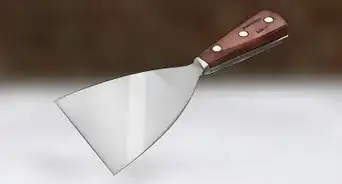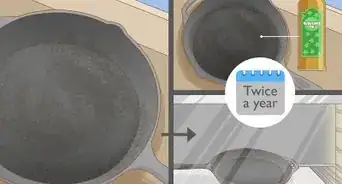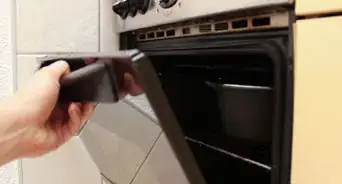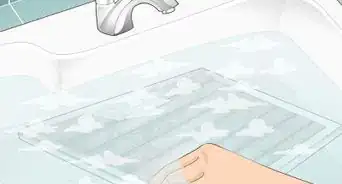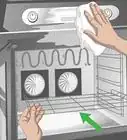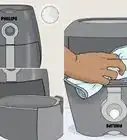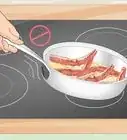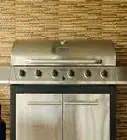This article was co-authored by Susan Stocker and by wikiHow staff writer, Hunter Rising. Susan Stocker runs and owns Susan’s Green Cleaning, the #1 Green Cleaning Company in Seattle. She is well known in the region for outstanding customer service protocols — winning the 2017 Better Business Torch Award for Ethics & Integrity —and her energetic support of green cleaning practices.
There are 14 references cited in this article, which can be found at the bottom of the page.
This article has been viewed 51,896 times.
Ceramic-glass stove tops make cleaning a lot easier since they have a flat surface, but food can still burn and get stuck on. If you don’t have any ceramic cleaners, you can easily lift minor stains with a paste of baking soda and water.[1] For more persistent stains or large pieces of residue burnt onto the cooktop, try using a scraper and ceramic cleaner to remove them. Within the afternoon, you can make your stove look new!
Steps
Scrubbing the Surface with Baking Soda
-
1Wipe as much off the stove top as you can with a damp paper towel. Wait until the stove cools off completely so you don’t burn yourself. Start in the back corner of the stove top and wipe residue toward the front. Cup your other hand under the edge of the stove to catch the pieces that came loose. Work your way across the stove in back-to-front strokes until you reach the other side.[2]
-
2Sprinkle baking soda over the burn marks. Pour the baking soda directly out of the box onto the stove top. Use enough to completely cover the burnt area and any other stains you want to remove. Spread the baking soda flat by hand so it forms an even layer over the surface.[3]
- Don’t use other abrasive powder cleaners because they could scratch or damage the ceramic.
Advertisement -
3Soak a microfiber towel in a dish soap solution. Fill a bowl with 1 teaspoon (4.9 ml) of liquid dish soap and 1 US quart (0.95 L) of warm water. Mix the solution together until it forms suds. Put a microfiber towel that’s large enough to cover the burnt area in the bowl and let it soak until it’s completely saturated.[4]
- You may need to use multiple towels if you need to cover the entire stove top.
-
4Lay the towel over the baking soda and leave it for 15 minutes. Pull the towel out of the soapy solution and wring it out loosely to remove some of the water. Unfold the towel and place it flat over the baking soda. Allow the towel to soak the baking soda for at least 15 minutes to help break down the residue.[5]
- Baking soda breaks down dirt and oil when it reacts with water, so it works great as a natural cleaner.
- You may leave the towel on the stove top for up to 30 minutes for more difficult stains or residue.
-
5Scrub the surface in a circular pattern a scrubbing pad. Remove the microfiber towel from your stove, doing your best to leave as much of the baking soda on the surface as you can. Start in the middle of the burnt area with a cloth scrubbing pad, working in circular motions out toward the edges. Apply slight pressure as you scrub to help lift the stains easier.[6]
- You may also use a microfiber cloth or paper towel if you don’t have a scrubbing pad.
Tip: Avoid using steel wool since you could leave scratches and damage the ceramic.
-
6Wipe the baking soda off with a paper towel. Start in the back corner and wipe toward the front of the stove with a single straight. Continue working across the surface of the stove, replacing the paper towel whenever it gets too wet or soiled. Clean off any leftover streaks with a dry paper towel.[7]
- If you weren’t able to clean the burnt area completely, you may need to try using baking soda again. If that doesn’t work, you may need a stronger cleaner.
- Spray glass cleaner on the stove and wipe it off with a paper towel if it still has a cloudy appearance.
Scraping and Washing Difficult Residue
-
1Work while the surface is still warm if possible. Turn off the stove as soon as you notice something burning, and set any cookware aside on a heat-safe surface. Allow the stove to cool slightly until it’s warm enough to comfortably work on without feeling too hot. Avoid letting it cool down completely since stains may set in easier or it could be more difficult to remove.[8]
- If the heat is too warm for you to handle, put on an oven mitt before you start working.
-
2Hold a metal scraper against the ceramic at a 45-degree angle. Put the blade of the scraper against the stove so it’s flush with the ceramic. Keep the handle at a 45-degree angle so you don’t scratch the cooktop. Place the edge of the blade against the stain or burned residue.[9]
- You can buy a metal scraper from your local hardware store.
-
3Push the scraper through the residue to lift it off the surface. Apply slight pressure to the scraper as you guide it through the residue. Use short forward strokes as you move the scraper over the residue. Go over burnt sections multiple times until you can’t lift up any more of the burnt section.[10]
- Always move the scraper’s blade away from your body so you’re less likely to injure yourself.
- If the blade on the scraper gets dirty, clean it with a paper towel.
Warning: Be careful not to apply too much pressure since you could break or damage the ceramic stove top.
-
4Wipe off the residue with a paper towel. Clean from the back of the stove toward the front so the residue is easier to control. Cup your hand underneath the edge of your stove and catch the pieces as they fall down. Replace the paper towel as it gets dirty so you don’t spread the burn marks around.[11]
- Try wetting the paper towel and wringing it out before wiping the stove to help lift up more of the fine powder residue.
-
5Apply a ceramic cooktop cleaner to the surface with a scrubbing pad. Put a coin-sized amount of the cooktop cleaner directly onto the stove. Use the corner of the scrubbing pad to spread the cleaner in a circular motion over the entire area you just scraped. Continue working the cleaner into the surface until it’s clear.[12]
- You can buy ceramic cooktop cleaners from appliance or home improvement stores.
- Don’t use oven cleaners or ammonia products since they could damage the cooktop.
-
6Let the cleaner dry until it hazes. Leave the cleaner on the surface and avoid using your stove until you’re finished cleaning. Allow the cleaner to sit for about 10–15 minutes, or until it forms a cloudy appearance.[13]
- The drying time may vary depending on the cleaner you use.
-
7Buff the surface with a dry microfiber towel. Work across the entire surface in circular motions to help polish the stove top. Apply light pressure as your work over the burnt areas to lift up any residual stains or discoloration. Wipe off all of the cleaner until the stove has a sparkling, clean appearance.[14]
- If you still see marks, you may need to clean the stove again.
Expert Q&A
-
QuestionHow do you clean a ceramic sink with natural cleaners?
 Susan StockerSusan Stocker runs and owns Susan’s Green Cleaning, the #1 Green Cleaning Company in Seattle. She is well known in the region for outstanding customer service protocols — winning the 2017 Better Business Torch Award for Ethics & Integrity —and her energetic support of green cleaning practices.
Susan StockerSusan Stocker runs and owns Susan’s Green Cleaning, the #1 Green Cleaning Company in Seattle. She is well known in the region for outstanding customer service protocols — winning the 2017 Better Business Torch Award for Ethics & Integrity —and her energetic support of green cleaning practices.
Green Cleaning Expert Natural cleaners are actually better at cleaning ceramic than chemical-based cleaners. The easiest way to clean a ceramic sink is to mix some baking soda with water to make a thick paste. Then, scoop the paste around the dirtiest areas in your sink. Use a scrubbing pad or the abrasive side of your sponge to scrub the paste into the ceramic. Wipe the paste away when you're done.
Natural cleaners are actually better at cleaning ceramic than chemical-based cleaners. The easiest way to clean a ceramic sink is to mix some baking soda with water to make a thick paste. Then, scoop the paste around the dirtiest areas in your sink. Use a scrubbing pad or the abrasive side of your sponge to scrub the paste into the ceramic. Wipe the paste away when you're done.
Warnings
- Be careful not to burn yourself on any hot surfaces.⧼thumbs_response⧽
- Avoid using steel wool, abrasive powders, or ammonia cleaners since they could damage the cooktop.[16]⧼thumbs_response⧽
- Always push metal scrapers away from your body so you don’t injure yourself if the blade slips.⧼thumbs_response⧽
Things You’ll Need
Scrubbing the Surface with Baking Soda
- Paper towel
- Baking soda
- Microfiber towel
- Bowl
- Dish soap
- Scrubbing pad
Scraping and Washing Difficult Residue
- Metal scraper
- Oven mitt
- Paper towel
- Ceramic cooktop cleaner
- Scrubbing pad
- Microfiber towel
References
- ↑ Susan Stocker. Cleaning Guru. Expert Interview. 8 November 2019.
- ↑ https://youtu.be/HjVxtKgy8gI?t=106
- ↑ Susan Stocker. Cleaning Guru. Expert Interview. 8 November 2019.
- ↑ https://www.centsablemomma.com/how-to-clean-a-ceramic-stove-top/
- ↑ https://youtu.be/HjVxtKgy8gI?t=147
- ↑ Susan Stocker. Cleaning Guru. Expert Interview. 8 November 2019.
- ↑ https://www.mom4real.com/how-to-clean-your-ceramic-stovetop/
- ↑ https://youtu.be/ZhJSIXnZBbo?t=47
- ↑ https://youtu.be/rn8QhEOi8WU?t=152

